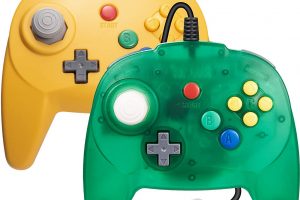The topic of what “classic” or “vintage” means when it comes to videogames and computers is once again rearing its controversial head on various forums and discussion groups. While I have a clear sense of what “classic” and “vintage” mean to me personally in terms of videogames and computers, I readily acknowledge that my interpretation is very much a by-product of having grown up in the late 1970s and 1980s. That’s the problem, really, that what defines “classic” and “vintage” really comes down to when you were born and what platforms make up your youthful memories.
My co-author and I dealt a bit with this topic in the hardware-based sequel to the book, Vintage Games, Vintage Game Consoles, where the greatest game playing platforms of all-time were discussed. Platforms like the Sony PlayStation 3 and Microsoft Xbox 360, although surely qualifying as two of the greatest game playing platforms of all-time, were purposely excluded because their respective stories are still unfolding, i.e., they’re still active on the market. Objectively, that’s what the definition of “classic” and “vintage” in this regard needs to come down to, whether a particular platform is still active on the market. That’s why the newest system covered in Vintage Game Consoles was the Nintendo GameCube, the last significant platform released that is no longer commercially supported (Nintendo’s Wii is just about – but not quite – ready to join its predecessor).
While even I would say that the Sony PlayStation 2, Microsoft Xbox, and Nintendo GameCube don’t feel “classic” or “vintage,” inevitably, given enough time, they will. How much more time needs to pass is again open to individual interpretation. The same applies to the generation after those systems, the generation after that, and then whatever comes after that, ad infinitum, until perhaps the concept behind a “platform” itself is no longer recognizable.
Of course, confusing the debate are platforms like the modern PC (highlighted by today’s official release of Windows 10), which can genuinely trace its roots back to 1981, despite having clear technological dividing lines along the way (DOS, Windows, 2D, 3D, 64-bit Windows, etc.). This was dealt with pragmatically in Vintage Game Consoles by having one chapter devoted to the DOS era of 1981 – 1995, then a separate chapter devoted to the Windows era of 1995 – Present. While one era in that example is definitely older, can’t the era that started 20 years ago also not be argued as “classic” and “vintage?” It made it into the book, so obviously I believe that it can.
So, what’s the solution? The only sane way of delineating platforms is to group them into eras and to put aside overly generic terms like “classic” and “vintage.” Frankly, it’s easier to say things like “Pre-Crash era,” “16-bit era,” etc., as dividing lines than something fairly generic like “classic” or “vintage,” much like I did for the umpteenth time in this 2006 feature on a previous version of our Website. Of course, even those designations are open to interpretation and debate, and we’ll really only have a reasonable solution to the issue if we can have generally agreed upon designations. Perhaps we need a reasonably official meeting of the minds equivalent to the infamous 2006 gathering of the International Astronomical Union (IAU) in Prague that determined Pluto was no longer a major planet. That example made everyone happy and agreeable to new common classifications, right?






 Your total news and information resource for all things Science, Technology, Engineering / Mathematics, Art, and Medicine / Health.
Your total news and information resource for all things Science, Technology, Engineering / Mathematics, Art, and Medicine / Health.
Leave a Comment